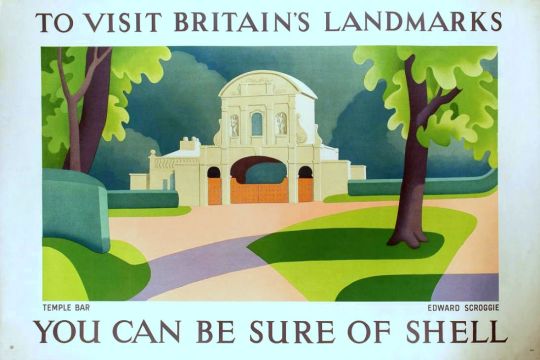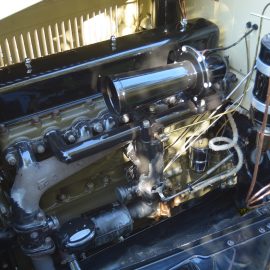
01 Aug Stories From the Stacks: Opening Up a Shell
A regular series about the museum’s motoring memorabilia and behind-the-scenes activities, compiled and written by FMM’s Assistant Curator Sian Theron. This month, Sian opens up a Shell…
Advertising has been around for a long time, with the oldest known example going back some 3 000 years ago in Thebes, Egypt. Modern advertising as we know it today started around the same time as the introduction of the printing press during the 16th and 17th centuries. And when it comes to motoring, advertising has always played a role, be it in the selling of cars or promoting the various materials and items that help to make an automobile run.
In the latter vein, the museum is fortunate to have a number of Shell advertising items dating back to the 1930s in its collection of memorabilia. They are large, black-and-white poster boards that have a uniquely South African flair to them in the use of colloquial Afrikaans rhymes and songs. Lyrics to Jan Pierrewiet and Ver in die Wereld Kittie have been changed to incorporate the idea of travel and motoring, with the use of Shell being the common denominator in a successful trip.
The South African campaign used images that portrayed journeys and travel as its selling point. In researching these items, I discovered that some of the cartoon artworks had been ‘borrowed’ from British advertising campaigns of the late-’20s and early-’30s, with the Janus type image “By Gad Sir! That’s Shell that was!” being taken from renowned cartoonist John Reynolds.
Although I was unable to find much more on the South African campaign, what I found interesting is the decidedly different route Shell’s British advertising took during the 1930s. From the 1920s, motoring was getting a bad name for destroying the local landscape, particularly with billboards. As a result, Shell, through the direction of Jack Beddington, their publicity manager at the time, created an entirely different form of advertising. Starting by removing all offending billboards, all subsequent advertising during the 1930s took on a fine art element where Beddington commissioned many of Britain’s top artists to create landscape drawings and paintings that became the new format of advertising. The new advertising was not posted on billboards, but rather attached to the delivery vans, thereby creating mobile advertising.
Where before advertising focussed entirely on the product sold, now it was using the beauty of Britain to encourage the buying of a product that wasn’t even made visible, except by name. In essence, the era saw the beginning of brand building. Shell worked hard to associate its name with positive imagery, the use of countryside landscapes additionally positioning Shell as a so-called ‘champion of nature’.
Ironically, by encouraging motorists to visit the countryside, Shell was promoting exactly what the nature lovers were against. But despite this approach, these early advertising campaigns were highly successful, and saw the birth of corporate patronage of the fine arts.
The Shell adverts at FMM are decidedly old and quite fragile, so are not yet on display, although full conservation is planned for them in due course.








